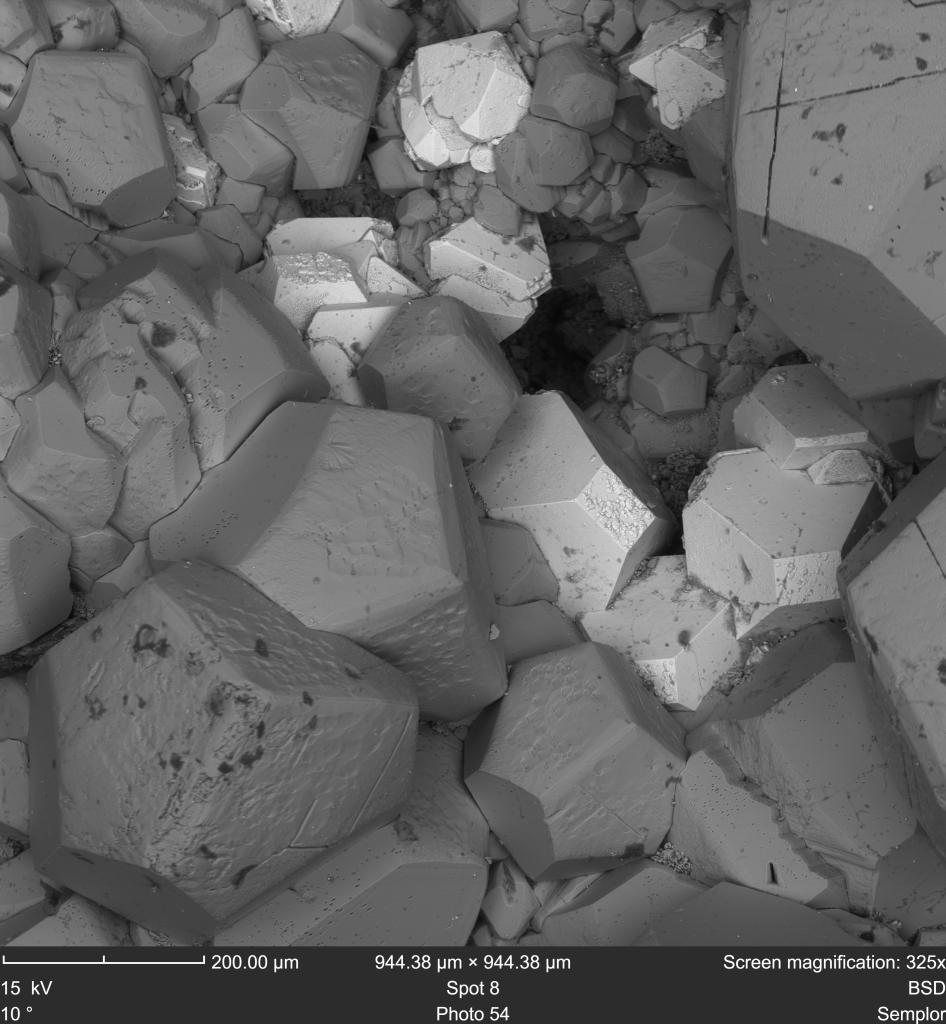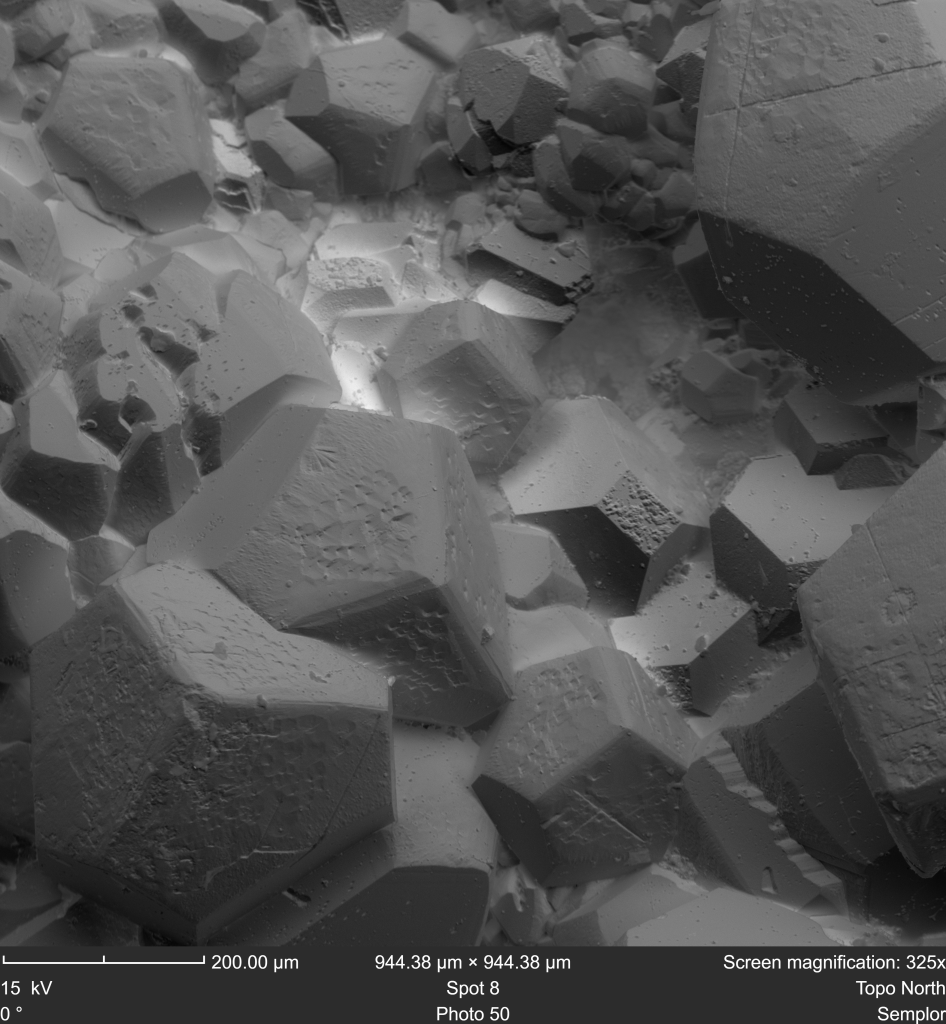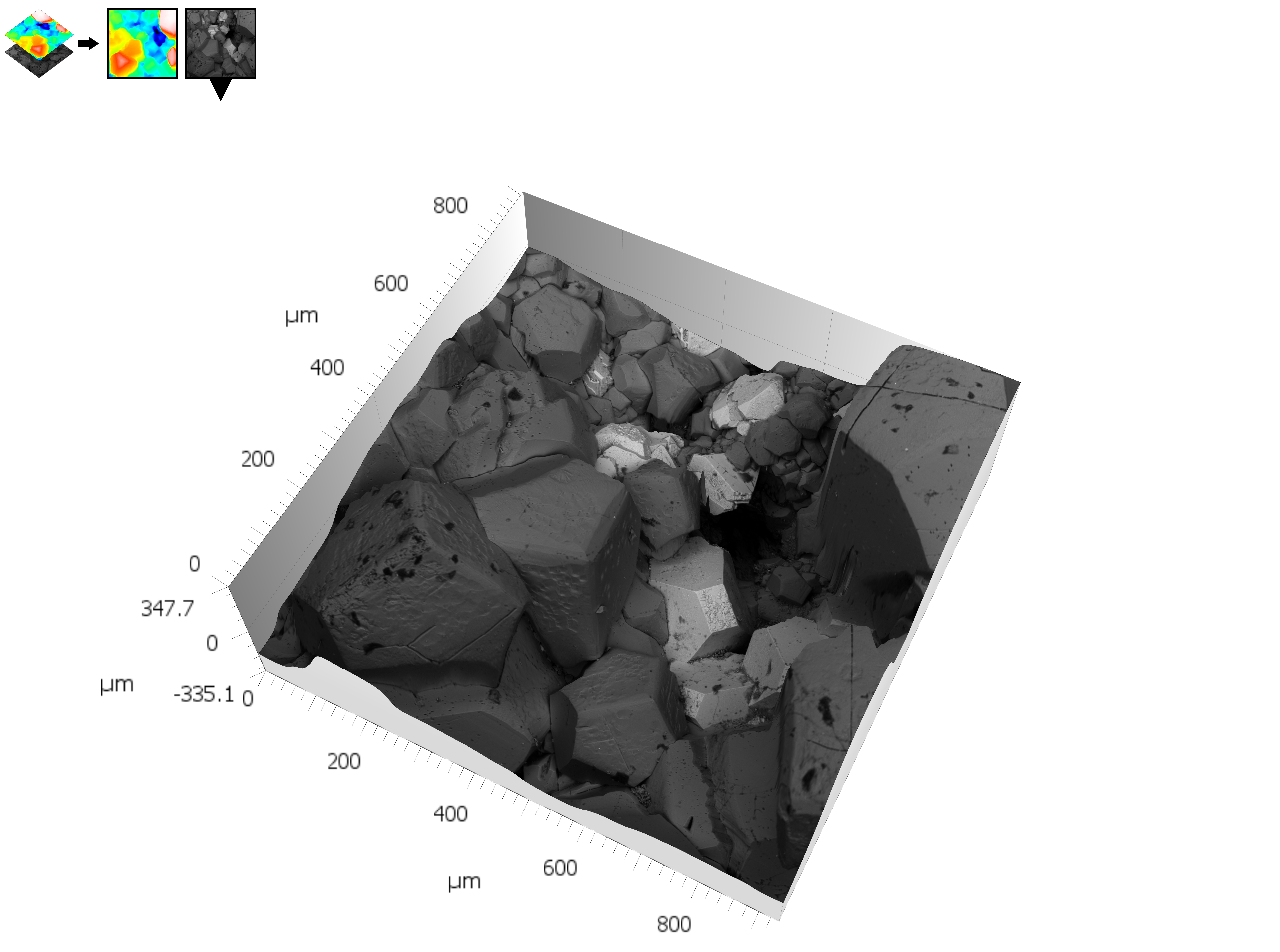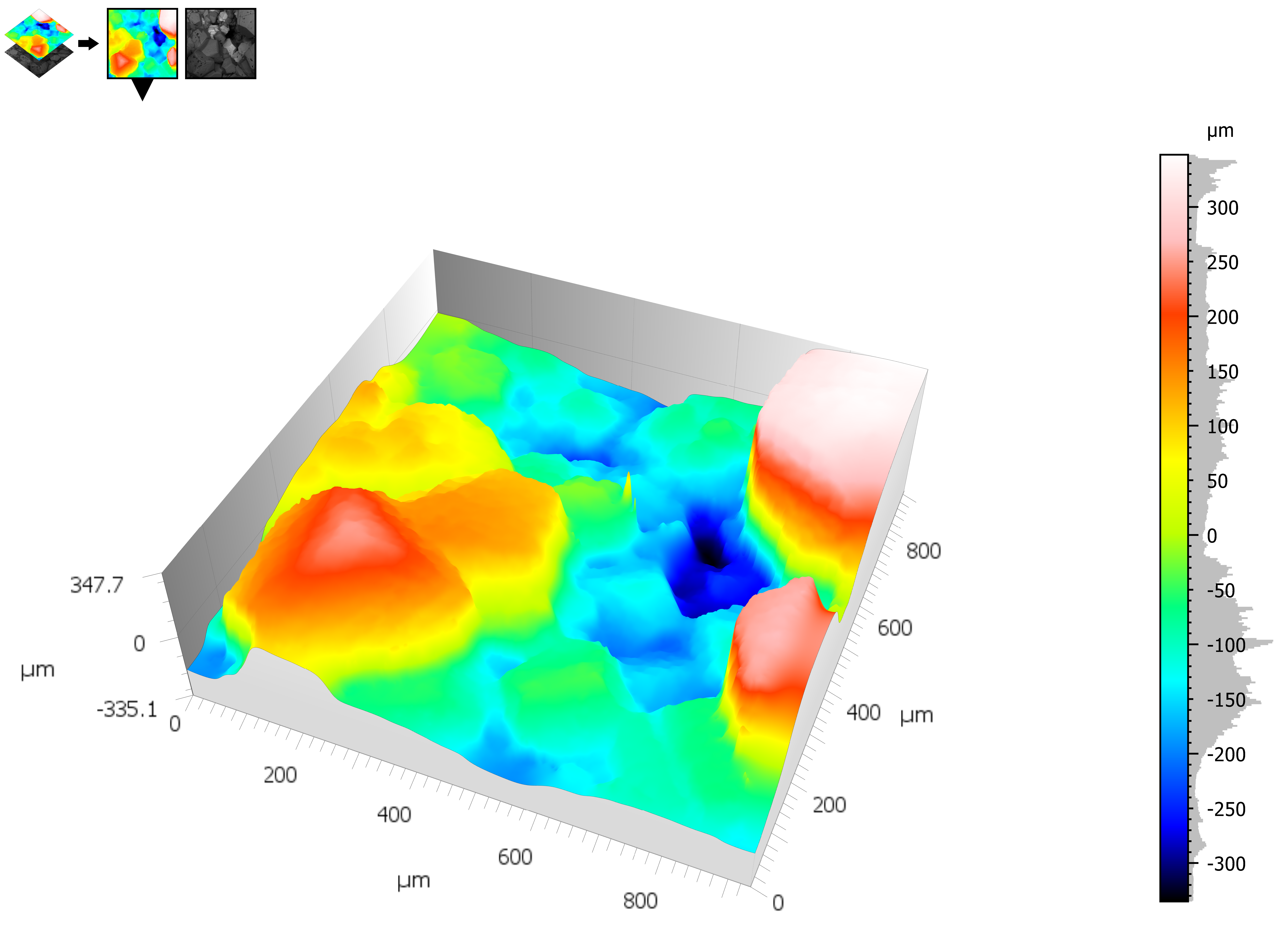Crystalline rock topography and 3D reconstruction
Scanning electron microscopes are crucial for the study of the microscopic morphology of minerals and fossils, as well as for the detection of microscopic features. They can provide high-resolution images of mineral morphology and crystal structure, along with qualitative and semi-quantitative analysis of micro-area compositions.
The BSD image in Figure 3 is an image of a crystalline rock (Calcite and Pyrite). Crystalline rock is a rock whose texture is composed of crystals of one or more minerals or mineraloids. Nearly all metamorphic and igneous rocks are crystalline, but some sedimentary rocks are as well. Using the NANOS high-quality BSE detector you can easily find which crystals are calcite (darker grey crystals) and which are pyrite (lighter grey crystals) due to the different elements present in those crystals.
The NANOS high-quality BSE detector is a 4-quadrant detector with fully controllable independent segments. By utilizing these segments in different combinations, topographical images with a ‘shading effect’ are generated, highlighting the surface of the crystal faces from multiple directions. This provides the roughness images of the crystalline rock sample as can be seen in Figure 4.
Using the 4 different segments, we can create 4 different topographical images utilizing all segments. With these 4 images, an accurate 3D reconstruction can be made of the surface depth as can be seen in Figures 1 and 2.



